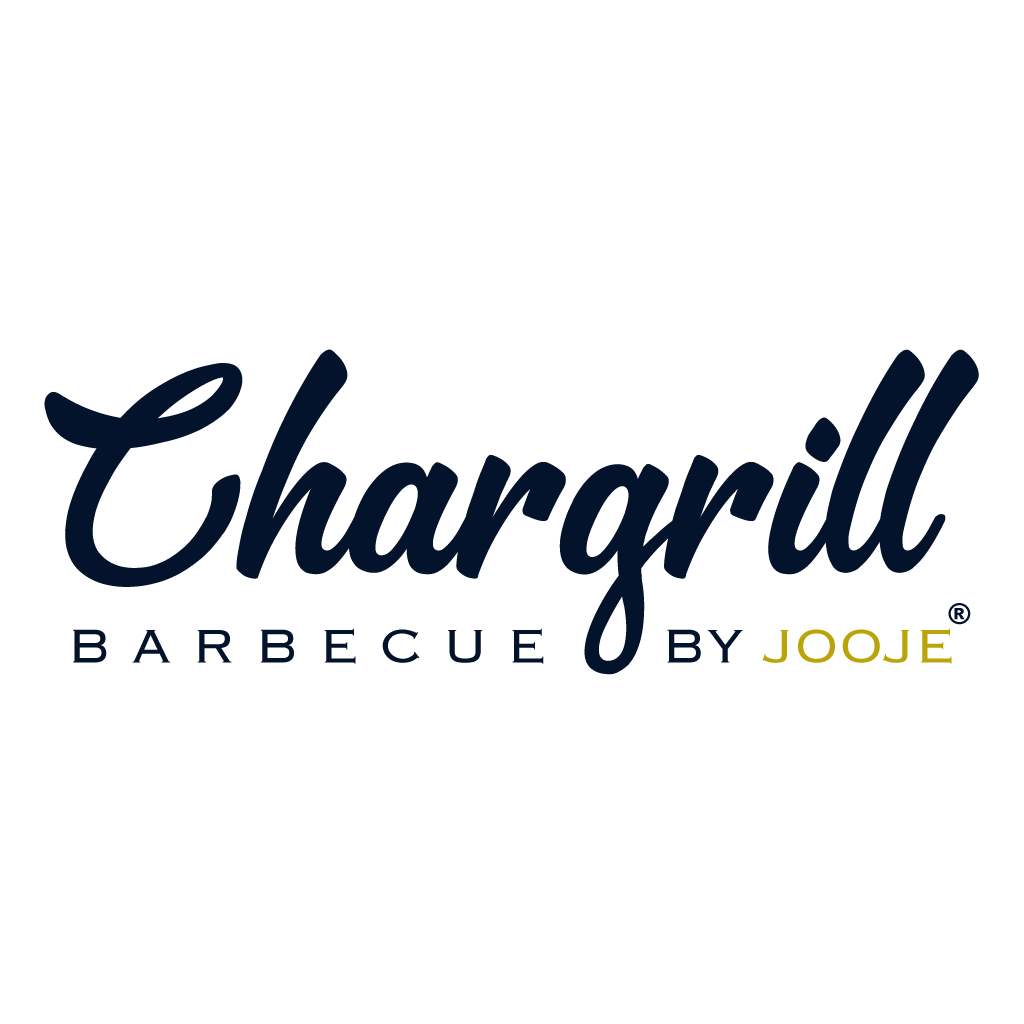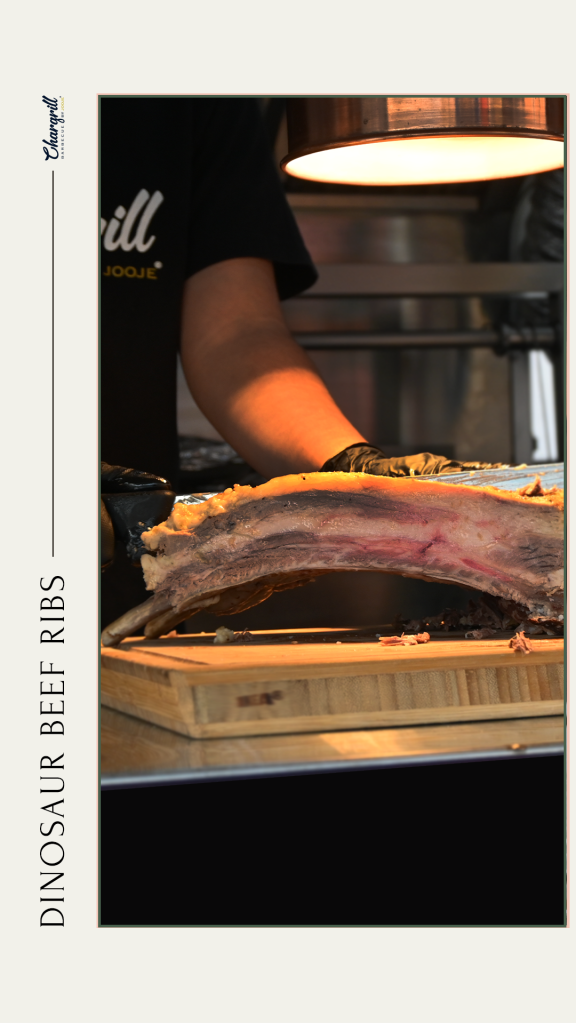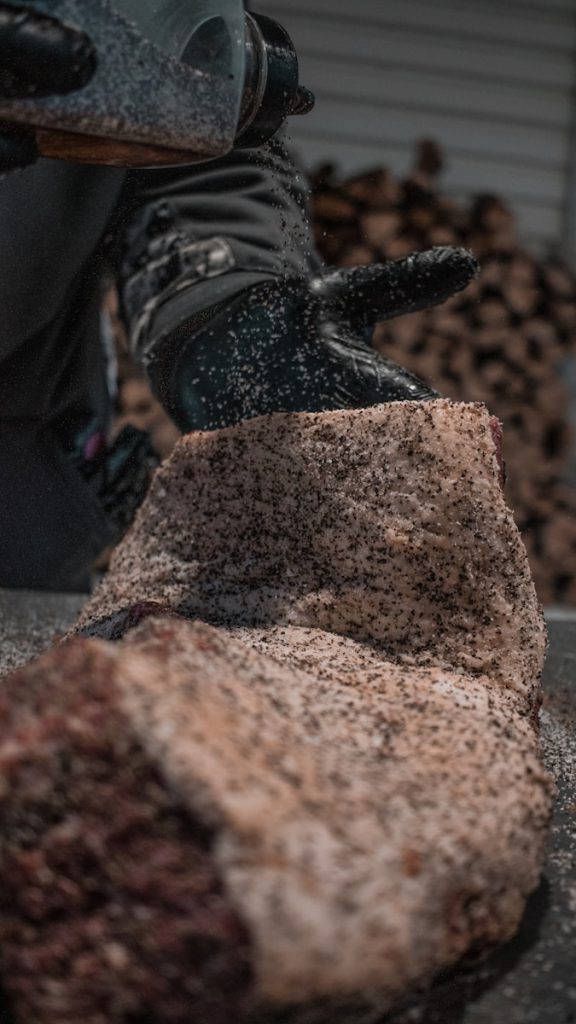Professional BBQ catering is a favourite choice for many events, from casual backyard gatherings to large corporate parties. While BBQs are synonymous with fun and delicious food, the health and safety aspects cannot be overlooked. Ensuring the health and safety of guests and staff is not only a legal obligation but also essential for the reputation of your catering service.
Health and safety in BBQ catering encompass various factors, including food hygiene, equipment safety, fire prevention, and emergency preparedness. These measures are vital to prevent foodborne illnesses, accidents, and other hazards that can occur during BBQ events. Understanding and implementing these practices can significantly enhance the quality of service and the overall experience for your clients.
One of the primary concerns in BBQ catering is food safety. Improper handling and preparation of food can lead to serious health issues, such as food poisoning. Additionally, BBQ equipment, if not used correctly, can pose significant risks, including burns and fire hazards. Hence, it is imperative to follow strict guidelines and protocols to ensure a safe environment.
In this comprehensive guide, we will delve into the essential health and safety tips for on-site BBQ catering. From food safety practices to fire safety precautions, each section will provide practical advice and guidelines to help you create a safe and enjoyable BBQ catering experience.
Food Safety and Hygiene Practices
Food safety is the cornerstone of any successful catering service. In BBQ catering, maintaining high standards of food hygiene is crucial to prevent foodborne illnesses and ensure the well-being of your guests. Here are some essential food safety and hygiene practices to follow:
Handwashing and Personal Hygiene: Handwashing is one of the simplest yet most effective ways to prevent the spread of bacteria and viruses. Staff should wash their hands thoroughly with soap and water before handling food, after using the restroom, and after touching any potentially contaminated surfaces. Additionally, wearing clean uniforms and hairnets can help maintain personal hygiene.
Sanitisation of Utensils and Surfaces: All utensils, cutting boards, and surfaces should be sanitised regularly to prevent cross-contamination. Use separate cutting boards for raw meat and vegetables to avoid the transfer of harmful bacteria. Sanitising solutions and wipes should be readily available, and staff should be trained on their proper use.
Avoiding Cross-Contamination: Cross-contamination occurs when harmful bacteria from raw food are transferred to ready-to-eat food. To prevent this, store raw and cooked food separately and use different utensils and plates for each. Colour-coded cutting boards can also help in identifying which board is used for specific types of food.
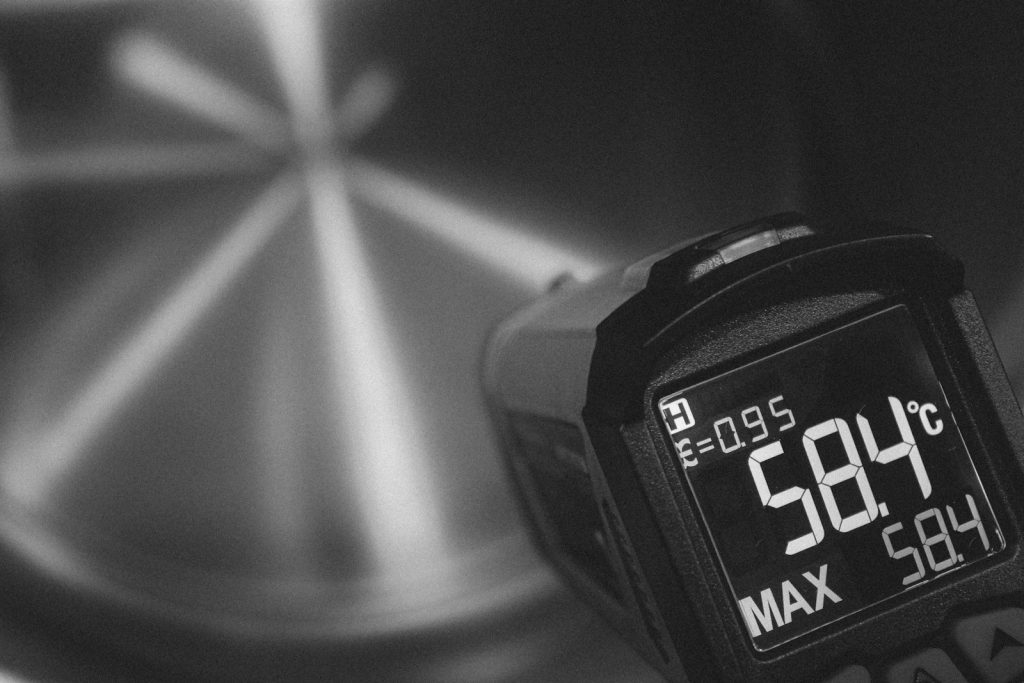
Safe Food Handling: Proper food handling techniques are vital to maintain food safety. Staff should be trained in safe food handling practices, including how to handle raw meat, seafood, and poultry. Gloves should be worn when handling ready-to-eat food, and they should be changed frequently to prevent contamination.
Temperature Control: Maintaining the correct temperature for food storage and cooking is critical to prevent bacterial growth. Refrigerators and freezers should be set at appropriate temperatures, and food should be cooked to the recommended internal temperatures to ensure it is safe to eat. Use food thermometers to check the temperatures accurately.
Proper Storage: Store perishable items in the refrigerator or freezer immediately after purchase. Ensure that raw meat is stored on the lower shelves to prevent juices from dripping onto other food items. Follow the “first in, first out” principle to use older stock before new stock.
By implementing these food safety and hygiene practices, you can minimise the risk of foodborne illnesses and ensure a safe dining experience for your guests. Regular training and monitoring of staff can help maintain these standards consistently.
Proper Handling and Storage of Ingredients
Proper handling and storage of ingredients are fundamental to maintaining their quality and safety in BBQ catering. Improper storage can lead to spoilage, contamination, and foodborne illnesses. Here are some guidelines to ensure your ingredients are handled and stored correctly:
Meat Storage: Raw meat, including poultry, beef, pork, and seafood, should be stored in the refrigerator at temperatures between 0°C and 4°C. If meat needs to be stored for an extended period, it should be frozen at -18°C or lower. When thawing frozen meat, it should be done in the refrigerator or a microwave, never at room temperature. This prevents bacterial growth that can occur at higher temperatures.
Vegetable and Fruit Storage: Fresh vegetables and fruits should be stored in a cool, dry place. Leafy greens and other perishable vegetables should be kept in the refrigerator. Fruits like apples and berries should also be refrigerated, while others like bananas and citrus fruits can be stored at room temperature. Ensure that vegetables and fruits are washed thoroughly before use.
Dry Goods and Non-Perishables: Dry goods such as grains, spices, and canned goods should be stored in a cool, dry, and dark place. Keep these items in airtight containers to prevent contamination from pests and moisture. Check the expiration dates regularly and follow the “first in, first out” principle to use older stock before new.
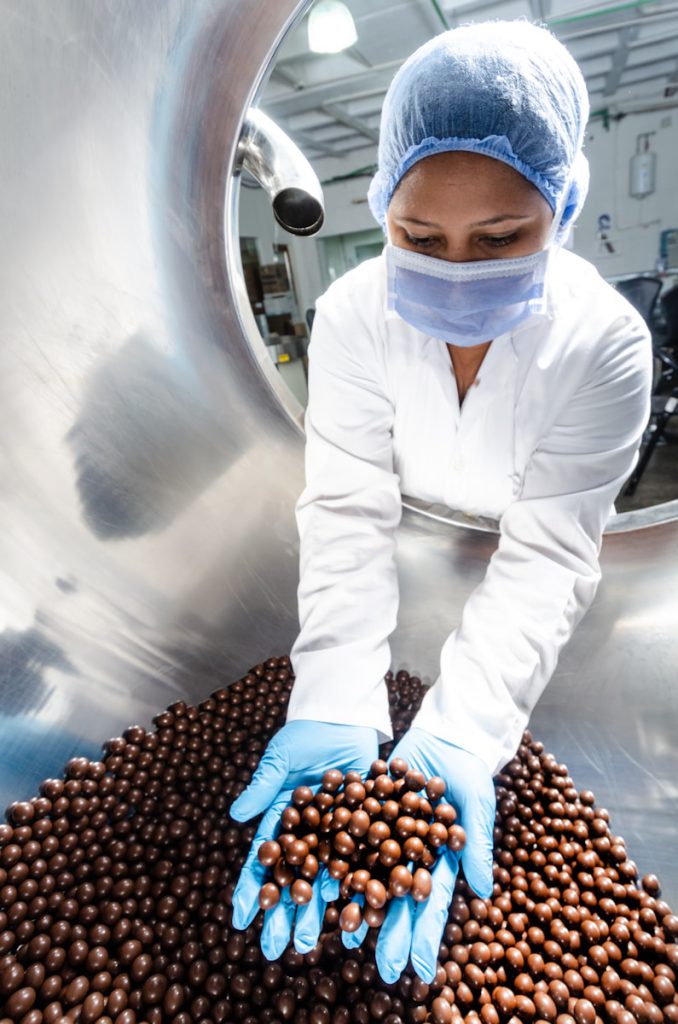
Sauces and Condiments: Sauces, marinades, and condiments should be stored according to the manufacturer’s instructions. Many sauces and condiments need to be refrigerated after opening to maintain their quality and prevent spoilage. Label containers with the date they were opened to track their freshness.
Handling Raw Ingredients: When handling raw ingredients, especially meat, it is crucial to prevent cross-contamination. Use separate cutting boards and utensils for raw meat and other foods. Wash hands thoroughly after handling raw meat to prevent the spread of bacteria. Keep raw meat separate from other ingredients during preparation and storage.
Temperature Control: Temperature control is vital in preventing bacterial growth in food. Perishable items should be kept at or below 5°C until they are ready to be cooked. Cooked food should be kept at temperatures above 60°C to prevent bacterial growth. Use insulated containers to transport food to and from the cooking area.
Labeling and Dating: Proper labeling and dating of ingredients are essential for maintaining food safety. Label all containers with the name of the ingredient and the date it was stored. This practice helps in tracking the freshness of the ingredients and ensures that older items are used first.
By following these guidelines for proper handling and storage of ingredients, you can ensure the safety and quality of the food you serve. Regular inspections and adherence to these practices can help maintain high standards in your BBQ catering service.

Cooking Temperature Guidelines
Cooking food to the correct temperature is crucial in BBQ catering to ensure it is safe to eat. Undercooked food can harbour harmful bacteria and pathogens, leading to foodborne illnesses. Here are some cooking temperature guidelines to follow for various types of meat and other food items:
Chicken and Poultry: Chicken and other poultry should be cooked to an internal temperature of at least 75°C. This temperature ensures that any harmful bacteria, such as Salmonella, are destroyed. Use a meat thermometer to check the temperature at the thickest part of the meat without touching the bone.
Beef: The safe cooking temperature for beef depends on the desired doneness. For medium-rare beef, cook to an internal temperature of 63°C. For medium, cook to 71°C. Ground beef should be cooked to a higher temperature of 71°C to ensure all bacteria are killed, as grinding can distribute bacteria throughout the meat.
Pork: Pork should be cooked to an internal temperature of 71°C. This temperature is sufficient to kill any parasites or bacteria present in the meat. Ensure that the thermometer is inserted into the thickest part of the meat for an accurate reading.
Seafood: Fish should be cooked to an internal temperature of 63°C. Shellfish, such as shrimp, crab, and lobster, should be cooked until they are opaque and firm. Clams, mussels, and oysters should be cooked until their shells open.
Eggs and Egg Dishes: Eggs should be cooked until both the yolk and white are firm. Dishes containing eggs, such as casseroles and quiches, should be cooked to an internal temperature of 71°C.
Vegetables: While most vegetables can be safely eaten raw, cooking them can enhance their flavour and texture. When grilling vegetables, ensure they are cooked until tender and have a slight char for the best taste.
Using a Meat Thermometer: A meat thermometer is an essential tool in BBQ catering to ensure food is cooked to the correct temperature. Insert the thermometer into the thickest part of the meat, avoiding bones and fat, for an accurate reading. Clean the thermometer with hot, soapy water between uses to prevent cross-contamination.
Resting Time: Allowing meat to rest after cooking is important for retaining its juices and flavour. During this resting period, the internal temperature can rise slightly, ensuring the meat reaches the safe temperature. For most meats, a resting time of 3-5 minutes is sufficient.
By following these cooking temperature guidelines, you can ensure that the food you serve is safe and delicious. Regularly calibrating your meat thermometer and training staff on proper use can help maintain consistent cooking standards in your BBQ catering service.
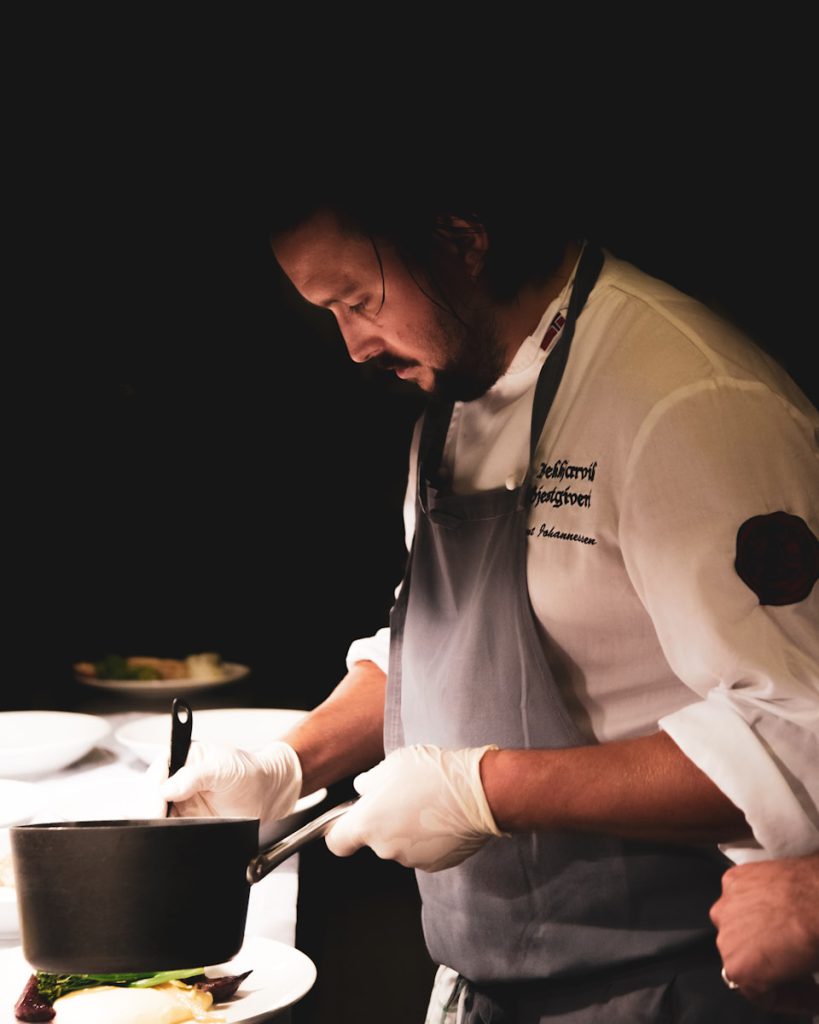
Managing Allergens and Special Dietary Requirements
Catering to guests with food allergies and special dietary requirements is a critical aspect of BBQ catering. With the increasing prevalence of food allergies and dietary restrictions, it is essential to manage allergens carefully and accommodate various dietary needs. Here are some strategies to ensure the safety and satisfaction of all guests:
Identifying Common Allergens: Common food allergens include peanuts, tree nuts, dairy, eggs, soy, wheat, fish, and shellfish. It is essential to be aware of these allergens and ensure that they are clearly identified in your menu items. Proper labelling can help guests with allergies make informed choices and avoid potential allergens.
Menu Planning and Labelling: When planning your menu, consider including options that cater to different dietary needs. This might involve offering gluten-free, dairy-free, nut-free, and vegan alternatives. Clearly label all dishes with potential allergens and provide detailed ingredient lists. This transparency can help guests with specific dietary requirements feel more at ease.
Cross-Contamination Prevention: Preventing cross-contamination is crucial in managing food allergies. Use separate utensils, cutting boards, and cooking surfaces for allergen-free dishes. Train staff on the importance of changing gloves and washing hands thoroughly after handling allergens. Colour-coded utensils and equipment can also help in distinguishing between allergen-containing and allergen-free food preparation areas.
Communication with Guests: Effective communication with guests is key to managing dietary requirements. Encourage guests to inform you of any allergies or dietary restrictions when they RSVP. This information allows you to prepare adequately and make necessary adjustments to the menu. During the event, staff should be knowledgeable about the ingredients in each dish and be able to answer any questions guests may have.
Special Dietary Accommodations: In addition to food allergies, guests may have other dietary requirements, such as vegetarian, vegan, halal, or kosher diets. Accommodating these needs shows respect for your guests’ preferences and beliefs. For instance, offering a variety of plant-based proteins, such as tofu, tempeh, and legumes, can cater to vegetarian and vegan guests. Similarly, ensuring that meat is sourced and prepared according to halal or kosher standards can accommodate religious dietary needs.
Emergency Preparedness: Despite all precautions, accidental exposure to allergens can still occur. Be prepared for such emergencies by having an action plan in place. Ensure that staff are trained in recognising the symptoms of an allergic reaction and know how to respond appropriately. Having an epinephrine auto-injector (EpiPen) on hand and knowing how to use it can be life-saving.
Feedback and Continuous Improvement: After the event, seek feedback from guests regarding their experience with the food and how well their dietary needs were met. This feedback can provide valuable insights and help you improve your allergen management and dietary accommodations for future events.
By implementing these strategies, you can effectively manage allergens and special dietary requirements, ensuring a safe and inclusive BBQ catering experience for all guests. Regular training and adherence to these practices can help maintain high standards and build trust with your clients.

Equipment Safety and Maintenance
Using BBQ equipment safely is essential to prevent accidents and ensure efficient operation. Proper maintenance of grills, gas cylinders, and other equipment is crucial for safety and longevity. Here are some key practices for equipment safety and maintenance in BBQ catering:
Grill Safety: Grills are the centrepiece of any BBQ catering setup, and their safe operation is paramount. Before using the grill, inspect it for any signs of damage or wear. Ensure that the grill is placed on a stable, flat surface away from any flammable materials. Always follow the manufacturer’s instructions for lighting and operating the grill.
Gas Cylinder Safety: Gas cylinders should be handled with care to prevent leaks and accidents. Store gas cylinders in an upright position in a well-ventilated area away from direct sunlight and heat sources. Regularly check gas connections for leaks using a soapy water solution; bubbles indicate a leak. Never attempt to repair a damaged gas cylinder yourself; seek professional assistance.
Cleaning and Maintenance: Regular cleaning and maintenance of BBQ equipment are crucial for both safety and performance. After each use, clean the grill grates thoroughly to remove food residue and grease. Use a wire brush or grill scraper for this task. Periodically deep clean the grill by disassembling it and cleaning all parts with warm, soapy water.
Ventilation and Smoke Management: Proper ventilation is essential when using gas or charcoal grills to prevent the build-up of harmful fumes. Ensure that the cooking area is well-ventilated, especially if the grill is used in an enclosed space. Using an exhaust fan or setting up the grill outdoors can help manage smoke and fumes.
Electrical Safety: If your BBQ setup includes electrical equipment, such as electric grills or lighting, ensure that all electrical connections are safe and secure. Avoid using extension cords, as they can pose a tripping hazard and may not be rated for outdoor use. Use only weatherproof electrical outlets and protect connections from moisture.
Fire Extinguishers and Safety Equipment: Having fire extinguishers and other safety equipment readily available is essential for managing emergencies. Place fire extinguishers in accessible locations near the cooking area. Staff should be trained in using fire extinguishers and should know the different types (e.g., Class A, B, and C) and their appropriate uses.
Regular Inspections: Conduct regular inspections of all BBQ equipment to ensure it is in good working condition. Look for signs of wear and tear, such as rust, cracks, or leaks. Replace any damaged parts immediately to prevent accidents. Keeping a maintenance log can help track inspections and repairs.
Training and Safety Protocols: Train all staff on the safe operation and maintenance of BBQ equipment. Establish clear safety protocols and ensure that staff adhere to them. Regular safety drills and refresher training sessions can help reinforce these protocols.
By following these equipment safety and maintenance practices, you can prevent accidents and ensure the efficient operation of your BBQ setup. Regular maintenance not only enhances safety but also prolongs the life of your equipment, making it a worthwhile investment for your catering business.

Fire Safety Precautions
Fire safety is a major concern in on-site BBQ catering. The combination of open flames, flammable materials, and outdoor settings can increase the risk of fire. Implementing fire safety precautions is essential to protect both people and property. Here are some guidelines for preventing and managing fires in BBQ catering:
Fire Safety Plan: Develop a comprehensive fire safety plan that outlines procedures for preventing and responding to fires. This plan should include the locations of fire extinguishers, evacuation routes, and emergency contact numbers. Ensure that all staff are familiar with the plan and know their roles in an emergency.
Proper Grill Placement: Place grills on a stable, non-flammable surface, such as concrete or gravel. Keep the grill at least 3 meters away from buildings, trees, and other flammable objects. Ensure that the grill is not placed under overhanging branches or awnings that could catch fire.
Use of Fire Extinguishers: Fire extinguishers are a crucial component of fire safety. Place fire extinguishers in easily accessible locations near the cooking area. Ensure that staff are trained in the proper use of fire extinguishers, including the PASS technique (Pull, Aim, Squeeze, Sweep). Use the appropriate type of extinguisher for the type of fire (e.g., Class B for flammable liquids).
Safe Handling of Flammable Liquids: Flammable liquids, such as lighter fluid and cooking oil, should be handled with care. Store these liquids in their original containers and keep them away from heat sources. Never use flammable liquids to reignite a flame or add to an already lit fire. Dispose of used containers properly to prevent leaks and spills.
Monitoring the Grill: Never leave the grill unattended while it is in use. Assign a staff member to monitor the grill at all times to ensure that it is operating safely. Keep a bucket of sand or a fire blanket nearby to quickly extinguish small fires.
Managing Grease Fires: Grease fires can occur when fat drips from food onto the flames. To prevent grease fires, clean the grill regularly to remove built-up grease and food residue. If a grease fire occurs, do not use water to extinguish it, as this can cause the fire to spread. Instead, use a fire extinguisher or a fire blanket to smother the flames.
Safe Disposal of Ashes and Coals: After using a charcoal grill, allow the coals to cool completely before disposing of them. Place the ashes and coals in a metal container and store them away from flammable materials. Do not dispose of hot ashes in plastic bags or trash cans, as they can ignite a fire.
Wind and Weather Considerations: Be mindful of weather conditions when setting up and using the grill. Strong winds can cause flames to spread and make it difficult to control the fire. Set up windbreaks or barriers to protect the grill from gusts of wind. Avoid using the grill during high fire risk conditions, such as during dry, windy weather.
By implementing these fire safety precautions, you can significantly reduce the risk of fire and ensure a safe BBQ catering event. Regular training and adherence to these guidelines can help maintain a high level of fire safety awareness among your staff.

8. Personal Protective Equipment (PPE) for Staff
Providing appropriate personal protective equipment (PPE) for staff is essential to protect them from potential hazards in BBQ catering. PPE can prevent injuries and ensure a safe working environment. Here are some key considerations for PPE in BBQ catering:
Heat-Resistant Gloves: Heat-resistant gloves are essential for handling hot grills, utensils, and food. These gloves provide protection against burns and allow staff to work safely with high temperatures. Ensure that the gloves are made from materials that can withstand high heat and provide a good grip. Staff should be trained on how to use and care for these gloves properly.
Aprons: Aprons protect clothing and skin from spills, splashes, and heat. Heavy-duty aprons made from heat-resistant materials are ideal for BBQ catering. They should cover the front of the body from the chest to the knees, providing ample protection. Waterproof aprons are also useful for tasks involving liquids, such as marinating or cleaning.
Safety Glasses: Safety glasses protect the eyes from smoke, heat, and debris. They are particularly important when working with grills and open flames. Choose safety glasses that fit comfortably and do not fog up easily. Goggles or face shields can offer additional protection in more hazardous situations.
Non-Slip Footwear: Non-slip footwear is crucial to prevent slips and falls, especially in outdoor settings where the ground can be uneven or slippery. Shoes should have a good grip and be resistant to heat and moisture. Closed-toe shoes are recommended to protect feet from falling objects and hot liquids.
Heat-Resistant Clothing: In addition to aprons, staff should wear clothing made from heat-resistant materials. Avoid synthetic fabrics that can melt and cause burns. Cotton or specially designed heat-resistant fabrics are preferable. Long sleeves and pants can provide additional protection against burns and splashes.
Hats and Hairnets: Hats and hairnets help maintain hygiene by keeping hair away from food. They also protect hair from catching fire or getting dirty. Ensure that all staff with long hair tie it back securely and wear a hat or hairnet while working.
Respiratory Protection: In environments with heavy smoke or fumes, respiratory protection such as masks or respirators may be necessary. These protect the lungs from inhaling harmful particles and smoke. Choose masks that are comfortable and provide adequate filtration. Ensure that staff are trained on the proper use and limitations of respiratory protection.
Hearing Protection: If the BBQ catering setup involves loud equipment, such as generators or music systems, hearing protection is important. Earplugs or earmuffs can protect staff from noise-induced hearing loss. Ensure that hearing protection is comfortable and does not interfere with communication.
First Aid Kits: While not a form of PPE, having a well-stocked first aid kit is essential for addressing any injuries that may occur. The kit should include bandages, antiseptic wipes, burn ointment, and other basic first aid supplies. Staff should be trained on how to use the first aid kit and know where it is located.
Regular Training and Updates: PPE is only effective when used correctly. Regular training sessions should be conducted to ensure that all staff understand the importance of PPE, how to use it properly, and how to maintain it. Keep records of training sessions and updates to PPE protocols.
By providing appropriate PPE and ensuring that staff are trained in its use, you can significantly reduce the risk of injuries in BBQ catering. Regular reviews and updates to PPE policies can help maintain a high level of safety and adapt to any changes in the work environment.
9. Emergency Preparedness and First Aid
Being prepared for emergencies is crucial in any catering event. On-site BBQ catering involves potential hazards such as burns, cuts, allergic reactions, and even fire. Having a robust emergency preparedness plan and first aid knowledge can make a significant difference in managing these situations effectively. Here are the key components of emergency preparedness and first aid for BBQ catering:
Emergency Action Plan: Develop a comprehensive emergency action plan that outlines procedures for different types of emergencies, including fires, severe weather, and medical emergencies. The plan should include:
- Clear roles and responsibilities for staff
- Emergency contact numbers for local authorities and medical services
- Evacuation routes and assembly points
- Procedures for shutting down equipment safely
Training and Drills: Regularly train staff on the emergency action plan and conduct drills to ensure everyone knows what to do in an emergency. Training should cover how to use fire extinguishers, perform CPR, and administer first aid for common injuries such as burns and cuts. Keeping staff well-prepared can help mitigate panic and ensure a swift response.
First Aid Supplies: A well-stocked first aid kit is essential. It should be easily accessible and include supplies such as:
- Bandages and dressings
- Antiseptic wipes
- Burn ointment
- Scissors and tweezers
- Adhesive tape
- Sterile gloves
- Pain relievers
- CPR face shield
Handling Burns: Burns are a common injury in BBQ catering. First-degree burns (red, non-blistered skin) can be treated by running cool water over the burn for at least 10 minutes, applying burn ointment, and covering it with a sterile bandage. For more severe burns, seek medical attention immediately. Never apply ice or butter to burns, as this can cause further damage.
Treating Cuts and Abrasions: For minor cuts and abrasions, clean the wound with antiseptic wipes, apply an antibiotic ointment, and cover it with a sterile bandage. For deeper cuts, apply pressure to stop the bleeding and seek medical help if necessary. Ensure that staff wear gloves when treating wounds to prevent infection.
Managing Allergic Reactions: In the case of an allergic reaction, quickly identify the symptoms, which can include hives, swelling, difficulty breathing, and anaphylaxis. If a guest or staff member has an EpiPen, assist them in using it immediately. Call emergency services if the reaction is severe. Knowing the location of the nearest hospital or medical centre is also essential.
Fire Response: If a fire occurs, follow the emergency action plan. Use a fire extinguisher to put out small fires, ensuring you use the correct type for the fire. Evacuate the area if the fire is too large to control and call emergency services. Regularly check fire extinguishers to ensure they are in good working order.
Weather Preparedness: Outdoor events can be affected by sudden changes in weather. Have a plan in place for severe weather, including strong winds, heavy rain, or extreme heat. Ensure that tents and other structures are securely anchored and that there is a designated shelter area for guests and staff.
Communication: Effective communication during an emergency is vital. Equip staff with radios or ensure they have access to mobile phones to coordinate responses quickly. Establish a clear chain of command and ensure that everyone knows who to report to in an emergency.
Post-Emergency Review: After an emergency, conduct a review to assess the effectiveness of the response. Identify any areas for improvement and update the emergency action plan accordingly. This review can provide valuable insights and help improve preparedness for future events.
By having a comprehensive emergency preparedness plan and ensuring that staff are trained in first aid and emergency response, you can handle any situation that arises during a BBQ catering event. Regular reviews and updates to your emergency procedures can help maintain a high level of safety and readiness.
